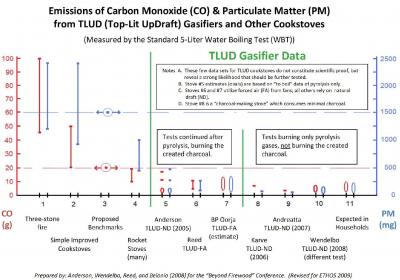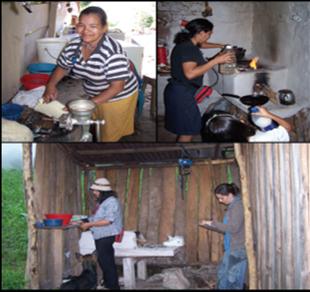CO and PM Emissions from TLUD Cookstoves Presentation to 2009 ETHOS Conference, Kirkland, WA 23-25 January 2009 Paul Anderson, Biomass Energy Foundation, January 22, 2009
Introduction Since 2005, high quality quantitative data on emissions from cookstoves have been accumulating. For data to be properly comparative, both a standardized cooking task and reliable emissions measurements are required. The principal test continues to be the standard five-liter Water Boiling Test (WBT), about which much has been written and debated. Equipment for reliable emissions measurements has been gathered, installed, tested, and accepted for operation at the Aprovecho Research Center (ARC) in Cottage Grove, Oregon, USA. No known equivalent site exists anywhere else in the world. Sincere thanks are given to the Shell Foundation, other financial donors, the ARC organization, and the numerous scientists who assisted in the establishment and operation of those emissions hoods. While the ARC facilitated the gathering of data presented here, the author is responsible for interpretations and any errors or omissions. Dozens of different stoves have been tested to various degrees with the ARC equipment and methodologies. Hundreds of separate test results have been collected. The two measured emissions are carbon monoxide (CO) and particulate matter (PM). This report is focused upon those emissions from four categories of cookstoves: 1. The traditional “three-stone fire,” which provides baseline data. 2. “Simple improved cookstoves” that utilize basic combustion that is confined in various stove structures made of ceramics, mud, or metal. 3. “Rocket stoves” that utilize clear principles and designs that provide significant control over the amount of wood in the area of combustion, with some restriction on the flow of air to the combustion area. 4. “TLUD (top-lit updraft) gasifier stoves” that essentially separate in time and location three processes of biomass burning (pyrolysis, char-gasification, and combustion). They also emphasize separate control of primary and secondary air supplies. Robert Flanagan, a TLUD stove developer in China, has coined the term “third-generation cookstoves” for these stoves that have the capability to easily create and save charcoal for use as a “biochar” additive to improve soil fertility (as in “terra preta”) and to remove permanently carbon from the atmosphere. See attached presentation


